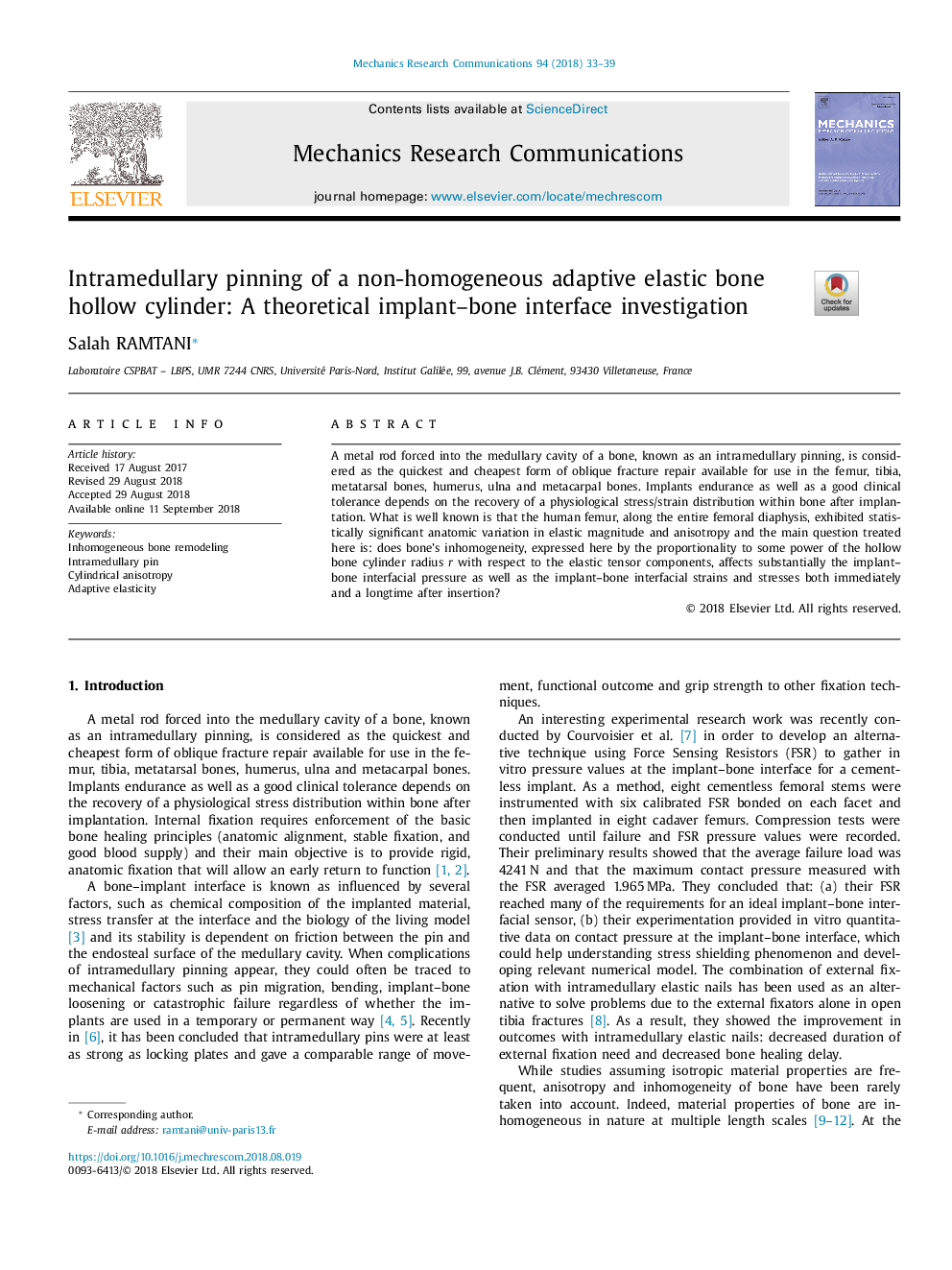| Article ID | Journal | Published Year | Pages | File Type |
|---|---|---|---|---|
| 10146794 | Mechanics Research Communications | 2018 | 7 Pages |
Abstract
A metal rod forced into the medullary cavity of a bone, known as an intramedullary pinning, is considered as the quickest and cheapest form of oblique fracture repair available for use in the femur, tibia, metatarsal bones, humerus, ulna and metacarpal bones. Implants endurance as well as a good clinical tolerance depends on the recovery of a physiological stress/strain distribution within bone after implantation. What is well known is that the human femur, along the entire femoral diaphysis, exhibited statistically significant anatomic variation in elastic magnitude and anisotropy and the main question treated here is: does bone's inhomogeneity, expressed here by the proportionality to some power of the hollow bone cylinder radius r with respect to the elastic tensor components, affects substantially the implant-bone interfacial pressure as well as the implant-bone interfacial strains and stresses both immediately and a longtime after insertion?
Related Topics
Physical Sciences and Engineering
Engineering
Mechanical Engineering
Authors
Salah RAMTANI,
